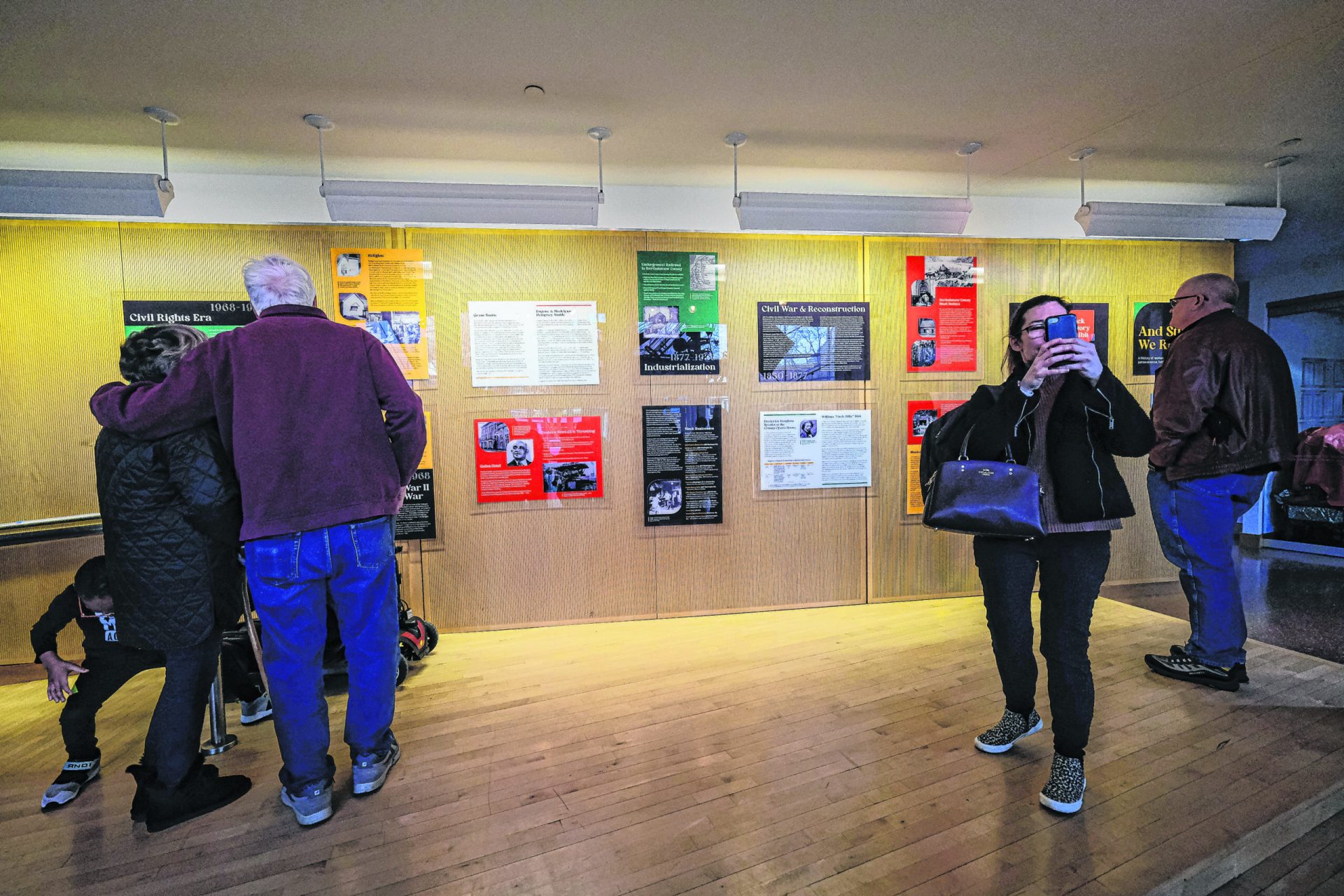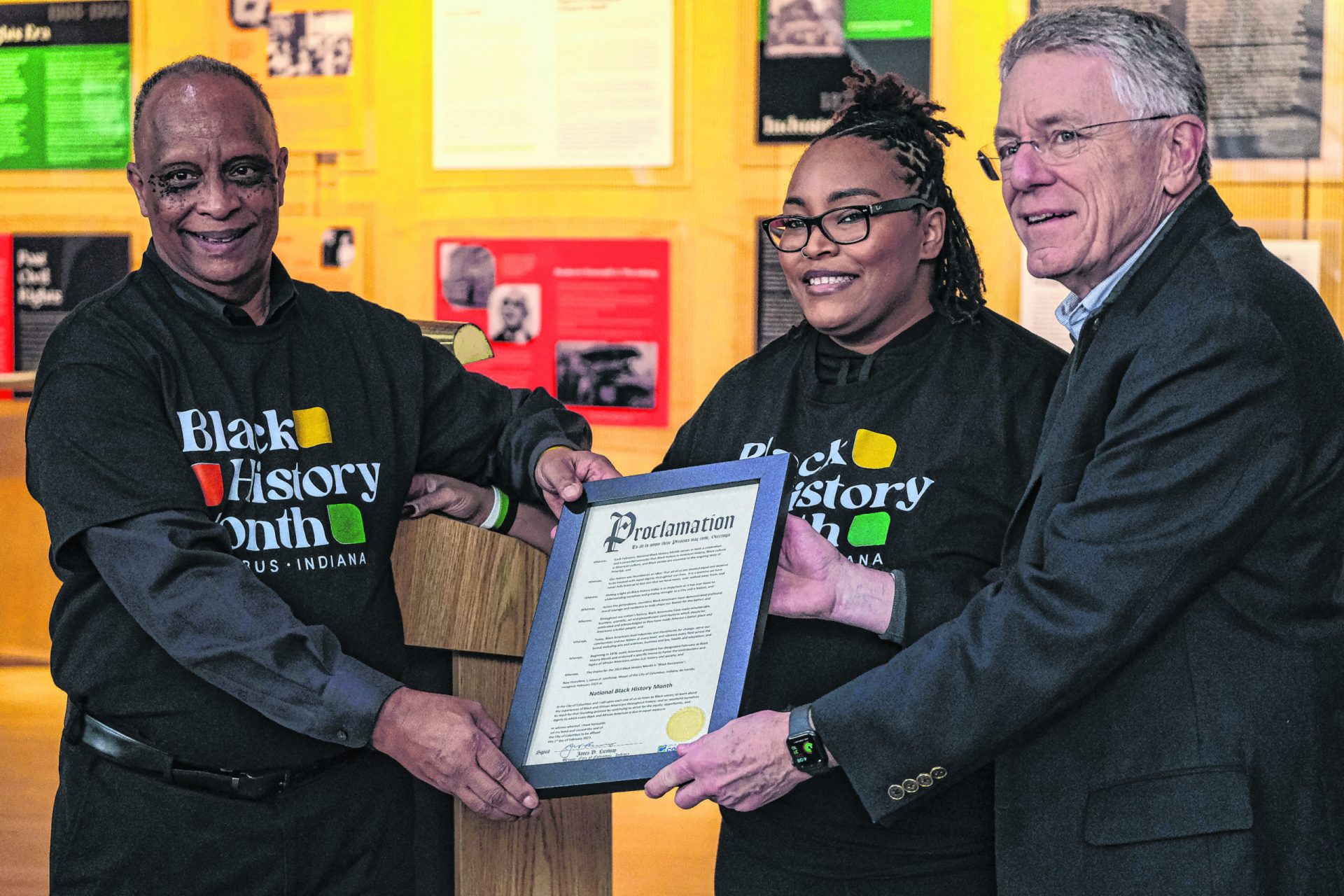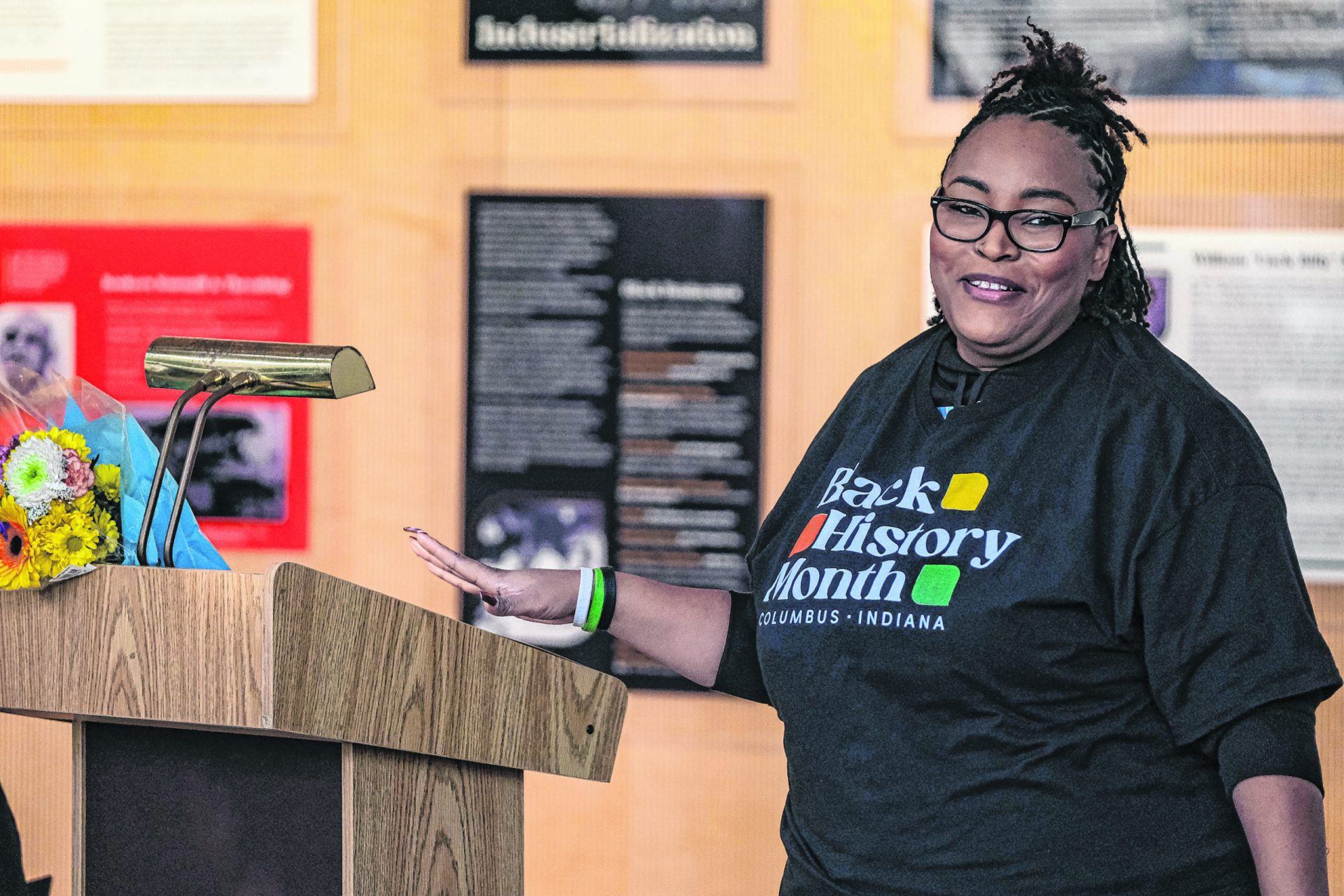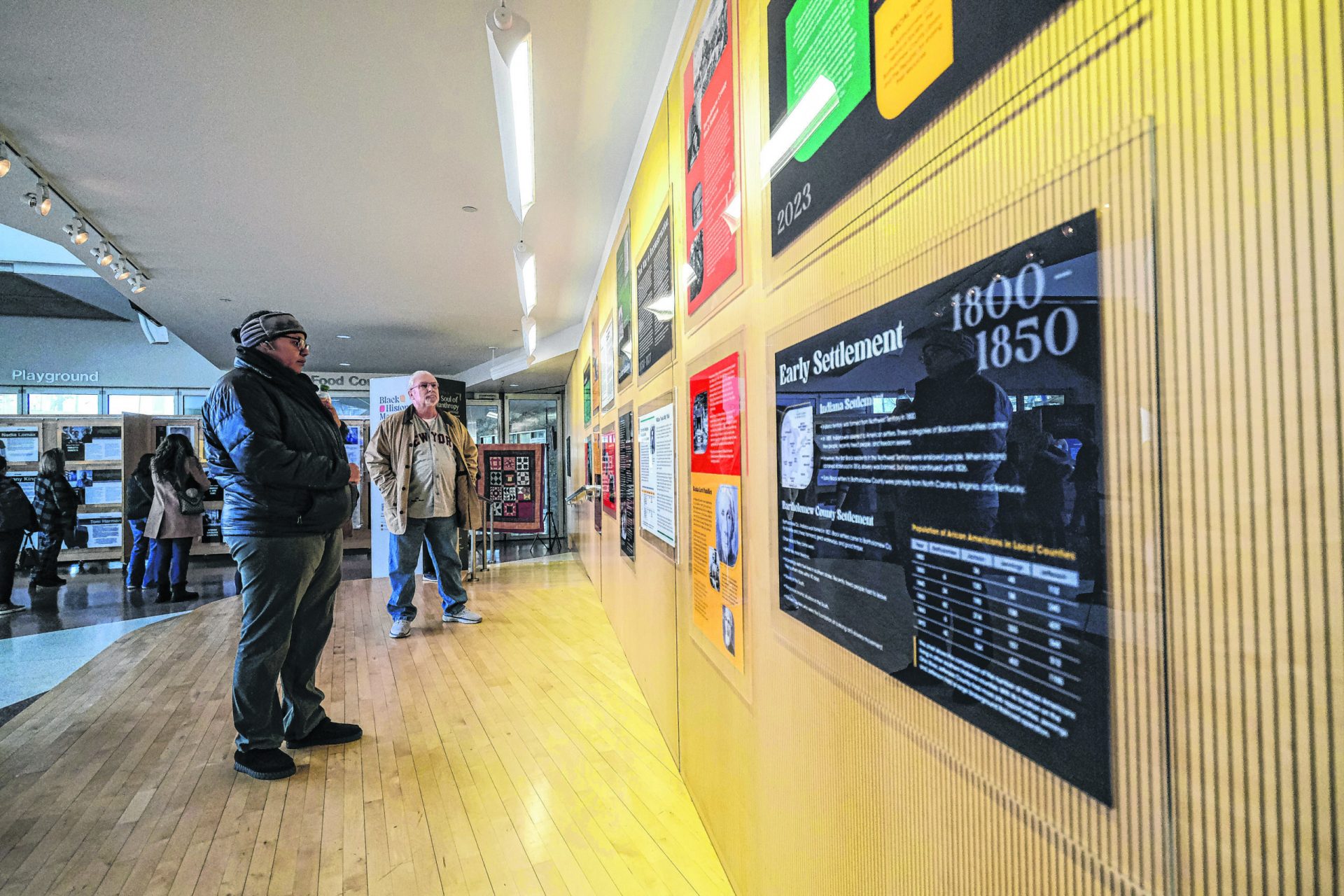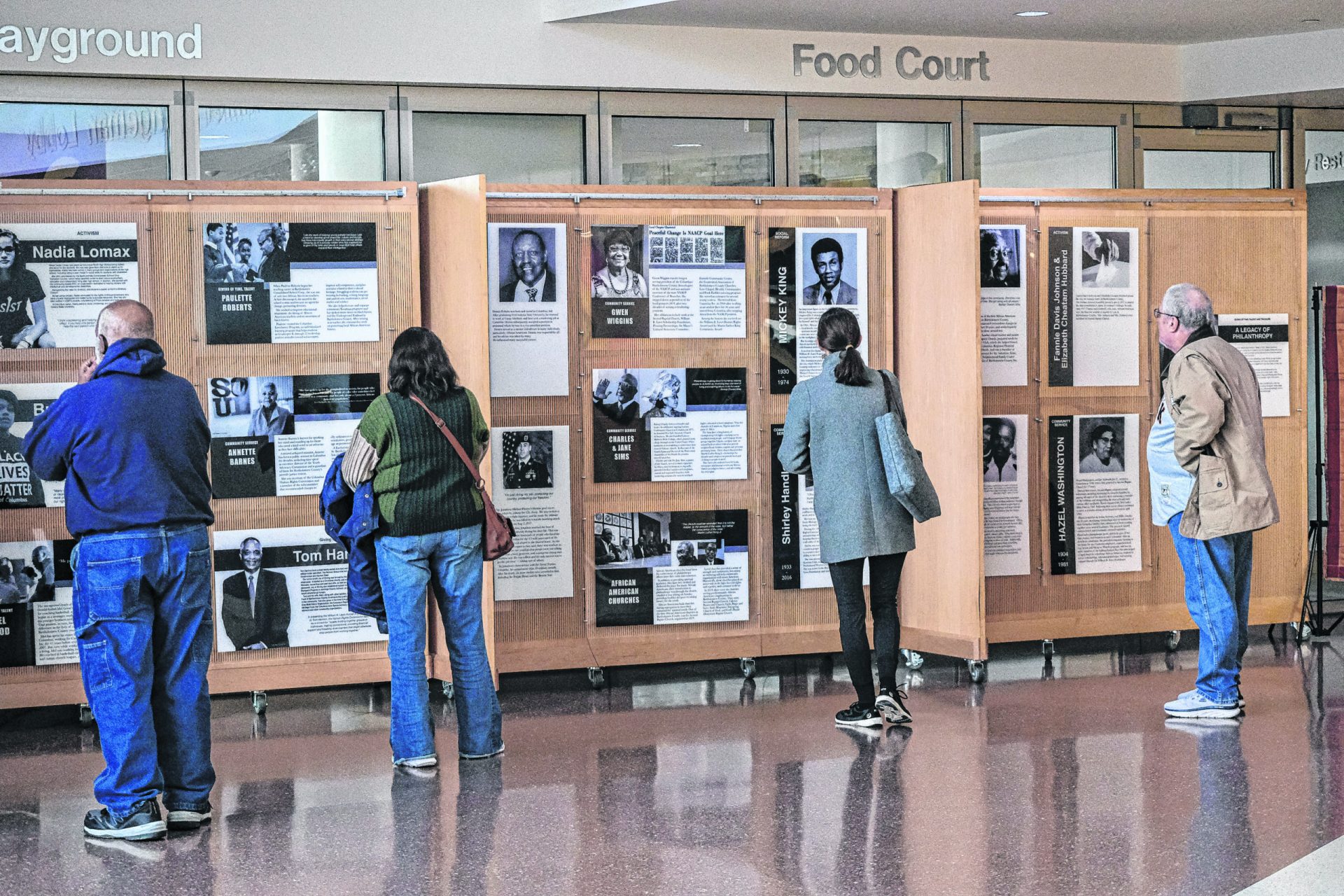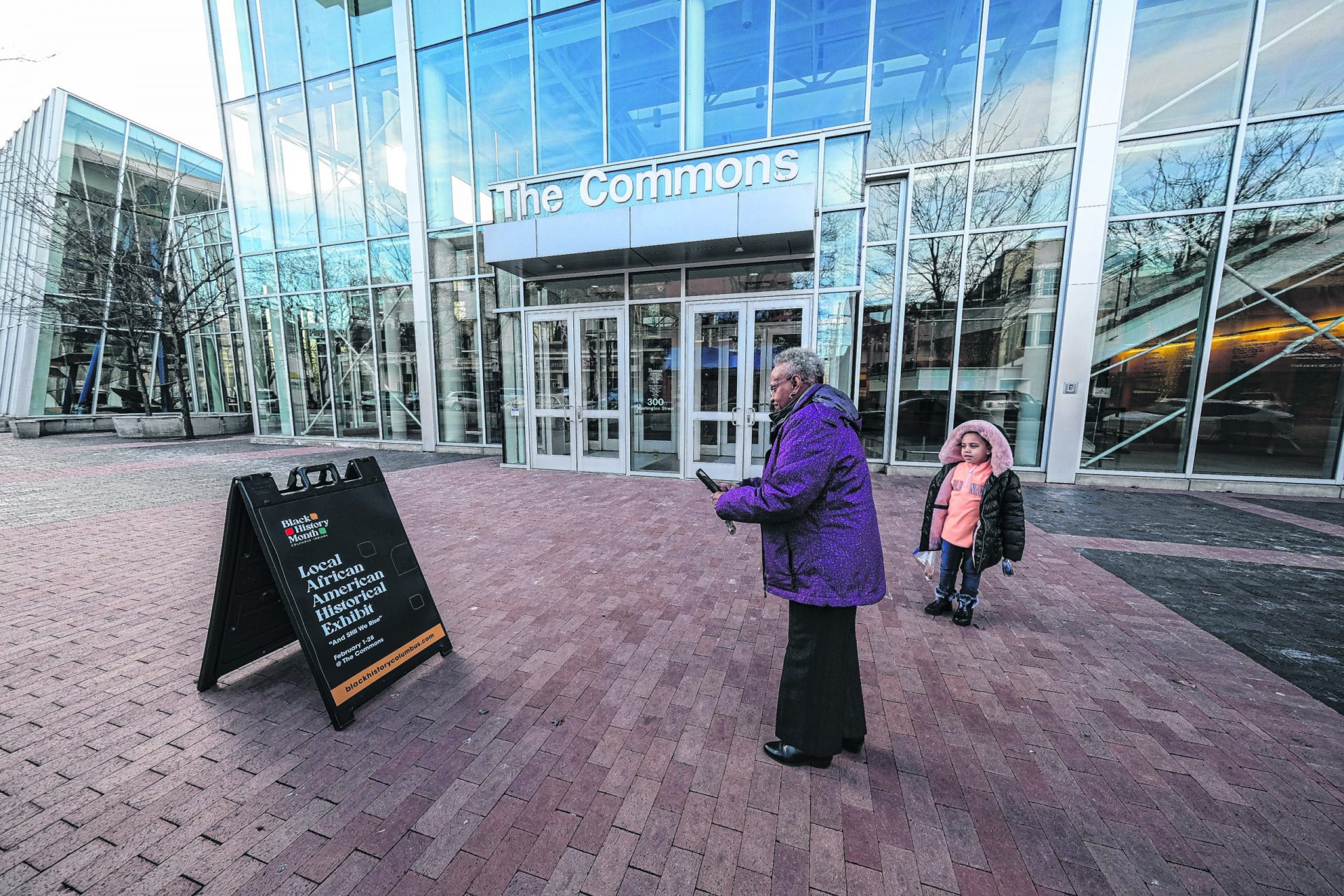
Mike Wolanin | The Republic People gather for the opening of the Black History Month exhibit highlighting Bartholomew County’s Black heritage at The Commons in downtown Columbus, Ind., Wednesday, Feb. 1, 2023. Paulette Roberts and Brenda Pitts curated the exhibit.
John Mize drove from his Indianapolis home to see his great, great uncle frozen in time amid largely previously unpublicized Bartholomew County history.
Mize was among about 70 other people at The Commons Wednesday for the kickoff of local Black History Month with the opening of the free exhibit, “And Still We Rise: A History of Resilience, Perseverance, Faith and Love” in place on the first floor through Feb. 28.
Local history buffs Paulette Roberts and Brenda Pitts researched and compiled the exhibition that included such jaw-dropping details as abolitionist Frederick Douglass speaking at the Crump Theater in 1873.
“This is magnificent,” said Mize, a former professor at Martin University, the only predominantly Black institution of higher education in Indiana. “Why? Well, partly because this is Indiana. You know, I don’t hold back (with comments).”
Mize saw a 1908 photo of relative Grant Smith, a Black barber whose business once was located near Second Baptist Church, the first predominantly Black church in Bartholomew County — because most African Americans were not welcome at other churches for decades. Smith became well-known enough in the community to cut the hair of Columbus’ white mayors at the Bartholomew County Courthouse, according to Mize.
Columbus businessman Tom Harmon, a community leader who helped secure financial support for the first-ever comprehensive Black History Month calendar and website at blackhistorycolumbus.com and a number of events, was impressed with the event turnout.
“I didn’t really expect this big of a crowd,” Harmon said in a brief opening ceremony. “This is great to see this on behalf of a community collaborative effort.”
Central Middle School teacher Whittney Wood-Gaines, who launched the idea of the calendar and website, acknowledged the August 2019 previous Black history exhibit, “The Soul of Philanthropy,” which Harmon and others made possible.
The local portion of that past exhibit was set up again adjacent to the current display.
“I learned so much from ‘The Soul of Philanthropy,’” Wood-Gaines told visitors.
Wood-Gaines also praised Yoonji Jung and her team at Good Creatives for their work on the website and also on the physical exhibit done in Black History Month colors, including red for bloodshed.
Jerry Long, a local NAACP member who has taught local adult education classes on the civil rights movement, was impressed with both the content and presentation.
“You won’t find anything done any better or more professionally than this at the Indiana Historical Society,” Long said.
He also was fascinated with part of the display highlighting changes in area Black population in the mid-1800s. Long said Roberts told him some of the dramatic dips highlighted in a decade or two could be due to essentially kidnappings of Blacks that took place then in order to sell them into slavery in the South.




